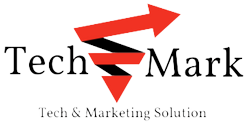For every firm, putting in place an Enterprise Resource Planning (ERP) system is a challenging and revolutionary project. Utilizing technology to boost productivity and growth, integrating multiple corporate tasks, and streamlining operations are all part of the process.
Careful planning, collaboration, and technical expertise is required to build an ERP System.
Similarly, implementing an effective ERP system necessitates thorough preparation, diligent execution, and strong stakeholder involvement.
We will walk you through the installation of an ERP system step-by-step in this guide, giving the information and understanding you need to complete this challenging trip.
With the understanding of the need for ERP as the starting point, this step-by-step guide will take you through the key phases of ERP implementation.
Steps and Process of ERP Implementation
Assessing current business challenges and identifying pain points
Examining the current issues and pain points in your firm is the first step in determining the necessity for ERP deployment. This entails performing a detailed examination of the systems, workflows, and business processes you currently use.
Find the locations that are generating delays, bottlenecks, or inefficiencies. Manual data entry, data duplication, a lack of real-time information, inadequate teamwork, restricted operational visibility, or trouble producing accurate and timely reports are examples of common pain issues.
Defining the goals and objectives of ERP implementation
It is critical to establish precise goals and objectives for the ERP implementation process once the pain areas have been identified. What precise results are you hoping to get by deploying an ERP system? Streamlining operations, developing decision-making skills, increasing data accuracy, enabling scalability, lowering expenses, or improving customer happiness are a few examples of goals.
The goals you set for yourself should be measurable, reasonable, and in line with your overall business plan. Setting specific goals and objectives helps to guarantee that the ERP system is in line with your organization’s vision and acts as a road map for the implementation process.
Determining the scope and scale of the ERP system based on business requirements
When it comes to implementing ERP, each firm has specific needs. The modules, capabilities, and departments that must be included in the ERP system are identified in ordering the scope and scale of the system. Take into account your organization’s particular requirements.
Defining Project Scope and Objectives
It is essential to establish the project scope and objectives in detail for unfocused and successful ERP deployment. This entails deciding which modules, functionalities, and departments the ERP system will cover.
Assembling an Implementation Team
It is essential to establish the project scope and objectives in detail to guarantee a focused and successful ERP deployment. This includes deciding which modules, functionalities, and departments the ERP system will cover.
Conducting Business Process Analysis
Analyzing your current company processes in-depth is crucial before deploying an ERP system. This study aids in detecting weaknesses, overlaps, and potential improvement areas. Analyze the advantages and disadvantages of the present data flows, workflows, and dependencies.
ERP Vendor Selection
A crucial choice in the installation process is selecting the appropriate ERP vendor. Based on your company’s needs, your budget, the vendor’s scalability, and their industry knowledge conduct research on and evaluate potential ERP vendors. Look for suppliers who have a track record of success.
System Configuration
Work together with the ERP vendor to customize the system’s settings and parameters based on the demands of your unique organization. By designing workflows, data fields, validation rules, and default settings, you may adapt the ERP system to your organization’s needs.
To maintain data integrity, define user roles, access privileges, and security procedures. Create a variety of user roles for the ERP system, each with unique access levels and permissions based on organizational hierarchy and job duties.
Customization and Integration
Determine any particular business needs that would necessitate ERP system customization. Work together with the ERP vendor or development team to customize the system to the unique requirements of your firm.
Enhancing data consistency and reducing manual data entry are two benefits of integration with systems like customer relationship management (CRM), human resources (HR), or inventory management.
Data Preparation and Migration
Data should be cleaned, checked, and prepared for migration to the new ERP system. To avoid data conflicts in the new system, duplicate records, insufficient data, and errors should be fixed or eliminated. Verify the data’s accuracy, integrity, and completeness by validating it.
Create a data migration strategy, and then carry out the transfer procedure in stages. In disruptions and reduced risks, it is essential to divide the migration into more manageable, smaller segments.
Testing and Quality Assurance
To verify the system’s usability, data integrity, and user acceptance, define a thorough testing strategy including numerous situations. A variety of topics should be included in this plan, such as system functionalities, integration points, data conversion, user interfaces, and reporting.
User Training
Give end users thorough training programs so they are familiar with the new ERP system. These consist of workshops, training sessions, and documentation created specifically for certain user roles and tasks. System navigation, data entry, reporting, and any other unique procedures operating about other’s job roles should all be covered in training.
Change Management and Adoption
To ensure a smooth transition and foster user adoption of the new ERP system, implement change management tactics. The principal components of change management are:
- All stakeholders should be made aware of the advantages and objectives of the new ERP system.
- Engage important stakeholders throughout the implementation process, including executives, managers, and end users.
- Include end users in the development and testing of the ERP system to make sure their requirements and viewpoints are taken into account.
- Even after the initial implementation, give users ongoing training and assistance.
- Encourage continual learning and development by asking users for input and keeping an eye on system usage.
Go-Live Preparation
Creating a thorough go-live plan
Make a thorough plan including the duties, timing, and tasks leading up to the go-live date. Contingencies and backup plans should be included in the strategy to deal with any unforeseen problems.
Post-Implementation Support
For an ERP implementation to be successful, post-implementation support is essential. It entails giving prompt support and help for any problems or issues that develop after the go-live date.
Conclusion
Implementing an ERP system is a significant undertaking that requires careful planning, coordination, and stakeholder involvement. By following the step-by-step process outlined in this article, organizations can successfully implement an ERP system that aligns with their business needs, improves efficiency, and drives growth.
It takes a lot of time, money, and effort to implement an ERP system. However, when done well, it can result in major advantages like higher customer satisfaction, streamlined operations, improved productivity, and better decision-making. You will be well-prepared to start your ERP implementation journey with confidence and put your company on a path of success and growth by following the step-by-step guide. Let’s dive in and learn.













